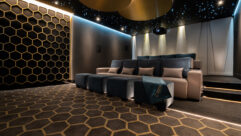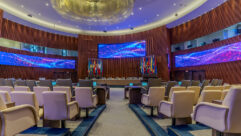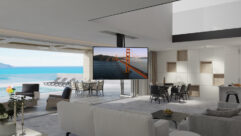
AV and Architects
Aug 1, 2007 12:00 PM,
By Michael Goldman

Just in time for CEDIA, we examine a high-end home theater installation this issue in Dan Daley’s cover story on p. 62. Reading between the lines in the piece, it becomes clear that the AV and architectural communities collaborate more closely these days than ever before. CEDIA and other organizations have done more than their fair share to promote this convergence of technology and design in an effort to bring those two communities together.
We’re all familiar with the stereotypes, of course: Architects, on one side, failing to confer early in projects with AV professionals, downplaying AV potential in their designs, or leaving clients to sort through AV choices with little or no guidance; AV professionals, on the other hand, sometimes failing to fully comprehend the basics of construction and aesthetics.
Many industry pros, however, report that, thanks to both the growth in importance of AV technology in recent years and a range of outreach efforts, those stereotypes are becoming increasingly outdated. Ross Anderson, senior project manager at New Jersey’s Electronics Design Group (EDG), which handled the home theater installation spotlighted in this issue, for instance, says matter-of-factly that integration firms that are “not working closely with architects are making a huge mistake.” He says architects are a major source of referrals for the company.
Anderson points out that his company and dozens just like it are working more closely with architects than they were a few years ago. “We especially work to forge close relationships with particular architects,” he says, “and we try to get them used to the work we do, to see the potential of these systems, and to include them in their designs up front.”
He adds that new technologies have made it easier to nurture this collaboration because the notion of designing aesthetically pleasing AV equipment and innovative ways of installing that equipment in a minimally invasive way has gained wide acceptance.
“It’s definitely about two industries working together for a common goal,” Anderson says.
Many of the technological advances that have led to these breakthroughs will be on display at CEDIA, of course. And we’ll be doing our part — look for periodic columns in these pages examining the relationship between AV and design.










